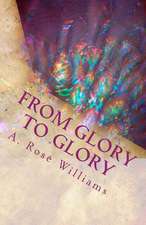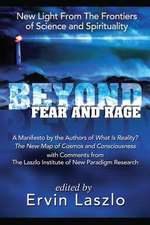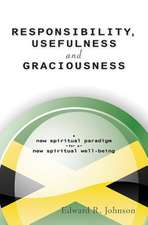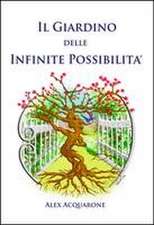The Self-Actualizing Cosmos: The Akasha Revolution in Science and Human Consciousness
Autor Ervin Laszloen Limba Engleză Paperback – 9 apr 2014
With contributions by physicists Paul A. LaViolette and Peter Jakubowski, pioneering systems scientist Ervin Laszlo explores the genesis of the current revolution in scientific thought and the latest findings in support of the Akashic field. He explains how the burgeoning Akasha paradigm returns our way of thinking to an integral consciousness, a nonlinear mode of understanding that enables us to accept the reality of nonlocal interconnection throughout the world. This new inclusive way of understanding reaffirms the age-old instinctive comprehension of deep connections among people, societies, and nature, and it integrates and transcends classical religious and scientific paradigms.
Providing examples from cutting-edge science of quantum-resonance-based interactions among all living systems, Laszlo shows the cosmos of the Akasha to be a self-actualizing, self-organizing whole, where each part is in coherence with all others and all parts together create the conditions for the emergence of life and consciousness. The advent of the Akasha paradigm marks a new stage in science's understanding of the fundamental nature of the world and offers unique guidance for contemporary efforts to create a peaceful and sustainable world.
Preț: 86.36 lei
Nou
Puncte Express: 130
Preț estimativ în valută:
16.53€ • 17.96$ • 13.89£
16.53€ • 17.96$ • 13.89£
Carte disponibilă
Livrare economică 31 martie-14 aprilie
Preluare comenzi: 021 569.72.76
Specificații
ISBN-13: 9781620552766
ISBN-10: 1620552760
Pagini: 208
Ilustrații: 29 b&w illustrations
Dimensiuni: 152 x 229 x 13 mm
Greutate: 0.34 kg
Editura: Inner Traditions/Bear & Company
Colecția Inner Traditions
ISBN-10: 1620552760
Pagini: 208
Ilustrații: 29 b&w illustrations
Dimensiuni: 152 x 229 x 13 mm
Greutate: 0.34 kg
Editura: Inner Traditions/Bear & Company
Colecția Inner Traditions
Notă biografică
Ervin Laszlo is a systems scientist, integral theorist, and classical pianist. Twice nominated for the Nobel Peace Prize, he has authored more than 75 books and published over 400 articles and research papers. He is the founder and president of the international think tank the Club of Budapest as well as of the Ervin Laszlo Center for Advanced Study. He lives in Tuscany.
Extras
Chapter 6
Cosmos
The Origins of Coherence in the Universe
Recent cosmological models view the universe as a cycle in a vaster and possibly infinite “multiverse.” In this concept the universe we inhabit is not “the” universe but merely a “local” universe. Its remarkable coherence must be seen in the context of its existence as a cycle in the multiverse. Our universe could have obtained its fine-tuned properties through its trans-universal connection with a preceding universe.
This is a cogent hypothesis, for the coherence of our universe is not likely to be a matter of mere serendipity. While it is true that the theory of large numbers allows that in a large number of tries even otherwise improbable outcomes have a reasonable probability of coming about, the number of tries needed to reach a significant probability that a coherent universe such as ours would come about is extremely high. The “searchspace” of possible universes is of the order of 10 to the 500th power, whereas the “hits” are limited to a small handful. Most of this staggeringly large number of universes is biologically sterile, incapable of giving rise to the level of complexity required for the phenomenon of life.
Akashic cosmology maintains that the properties of our universe are not the result of blind chance. The selection of this particular universe from among the enormous number of alternative universes in the multiverse was not random. It was due to the transfer of information between successive local universes in the multiverse.
A sophisticated cosmological model substantiates this hypothesis. It was developed by a team of astrophysicists led by Abhay Ashtekar (2003) at the Institute for Gravitational Physics and Geometry at Penn State University. Their model permits the definition of the state of this universe prior to the “Bang” that gave rise to it. This is a remarkable achievement, for the equations of general relativity do not permit going back to the time immediately following cosmic inflation: matter was so dense at that time that the equations of general relativity do not hold. Quantum equations can penetrate further, but they were not available to Einstein. The mathematics of loop quantum gravity now furnish the needed equations and permit “retrodicting” the conditions that reigned in this universe not just immediately after the explosion that gave rise to our universe, but prior to it.
In loop quantum gravity cosmology the fabric of space is a weave composed of one-dimensional quantum threads. According to this understanding, Einstein’s four-dimensional continuum is only an approximation; the geometry of spacetime is not continuous but has a discrete “atomic” structure. Before and during the primal explosion this fabric was torn apart, making the granular structure of space dominant. Gravity shifted from a force of attraction to a force of repulsion, and this produced the explosion that created our universe, and all other universes in the multiverse.
The simulations of loop quantum gravity indicate that prior to the creation of our universe there was another universe with similar physical characteristics. Ashtekar and collaborators were surprised at this finding and kept repeating the simulations with different parameter values. But the finding held up. It appears that our universe was not born in the singularity known as the Big Bang, and it will not end in the singularity of a Big Crunch. The universe is not “our” universe but a multiverse that produces successive universes. Big Bangs and Big Crunches are phase transitions in the multiverse, critical transitions where spacetime shrinks to quantum dimensions. The matter-component of a prior universe “evaporates” in black holes and is re-born in the superfast expansion that follows. Instead of a Big Bang leading ultimately to a Big Crunch, we have recurring Big Bounces.
The consistency of the physical parameters of the successive universes cannot be explained by mere serendipity. As just noted, the search-space of alternative universes is too large to lend plausibility to the thesis of random selection. Could each of the successive universes affect its successor? In the standard model this would be extremely unlikely, since in the transition from one cycle to the next the structure of spacetime is torn apart. Yet loop quantum gravity cosmology indicates that the physical characteristics of the preceding universe are reproduced in the next.
Various cosmological models embrace the concept of an enduring matrix underlying the birth, evolution, and devolution of local universes. These universes may not be born in a condition of tabula rasa: they may be “in-formed” by the matrix shaped by the preceding universe.
The Evolution of Our Universe
Astronomical and astrophysical evidence leave no doubt that our universe is an evolving and not a steady-state system. The in-formed energies that appear as its matter-content were created in the burst that marked the transition from the previous to the current cycle of the multiverse.
In Akashic cosmology the cosmos is an integral system actualizing in the interaction of two dimensions: an unobservable deeper dimension, and an observable manifest dimension. The deeper dimension is the Akasha: the A-dimension. The observable dimension is the manifest M-dimension. Across the multiverse’s cyclic universe-creating processes, two-way interaction between the A- and the M-dimension form a loop of action and reaction. This creates increasing coherence in the M-dimension, and accumulates in-forming potential in the A-dimension.
Systems of particles, and systems of systems of particles, evolve in each cycle of the multiverse, but their evolution is limited by physical conditions in the given cycle. The cycles are finite, and physical conditions in them are not indefinitely conducive to the evolution and persistence of complex systems. Thermal and chemical conditions are suitable for the buildup of such systems only during the expansionary phase of the cycles. As expansion reaches an apex and gives way to contraction, physical conditions become unfavorable for the evolution and persistence of complex systems. During the super-compacted final phases of a universe-cycle only the stripped nuclei of atoms persist; and then those also die back into the enduring matrix of the multiverse.
Cosmos
The Origins of Coherence in the Universe
Recent cosmological models view the universe as a cycle in a vaster and possibly infinite “multiverse.” In this concept the universe we inhabit is not “the” universe but merely a “local” universe. Its remarkable coherence must be seen in the context of its existence as a cycle in the multiverse. Our universe could have obtained its fine-tuned properties through its trans-universal connection with a preceding universe.
This is a cogent hypothesis, for the coherence of our universe is not likely to be a matter of mere serendipity. While it is true that the theory of large numbers allows that in a large number of tries even otherwise improbable outcomes have a reasonable probability of coming about, the number of tries needed to reach a significant probability that a coherent universe such as ours would come about is extremely high. The “searchspace” of possible universes is of the order of 10 to the 500th power, whereas the “hits” are limited to a small handful. Most of this staggeringly large number of universes is biologically sterile, incapable of giving rise to the level of complexity required for the phenomenon of life.
Akashic cosmology maintains that the properties of our universe are not the result of blind chance. The selection of this particular universe from among the enormous number of alternative universes in the multiverse was not random. It was due to the transfer of information between successive local universes in the multiverse.
A sophisticated cosmological model substantiates this hypothesis. It was developed by a team of astrophysicists led by Abhay Ashtekar (2003) at the Institute for Gravitational Physics and Geometry at Penn State University. Their model permits the definition of the state of this universe prior to the “Bang” that gave rise to it. This is a remarkable achievement, for the equations of general relativity do not permit going back to the time immediately following cosmic inflation: matter was so dense at that time that the equations of general relativity do not hold. Quantum equations can penetrate further, but they were not available to Einstein. The mathematics of loop quantum gravity now furnish the needed equations and permit “retrodicting” the conditions that reigned in this universe not just immediately after the explosion that gave rise to our universe, but prior to it.
In loop quantum gravity cosmology the fabric of space is a weave composed of one-dimensional quantum threads. According to this understanding, Einstein’s four-dimensional continuum is only an approximation; the geometry of spacetime is not continuous but has a discrete “atomic” structure. Before and during the primal explosion this fabric was torn apart, making the granular structure of space dominant. Gravity shifted from a force of attraction to a force of repulsion, and this produced the explosion that created our universe, and all other universes in the multiverse.
The simulations of loop quantum gravity indicate that prior to the creation of our universe there was another universe with similar physical characteristics. Ashtekar and collaborators were surprised at this finding and kept repeating the simulations with different parameter values. But the finding held up. It appears that our universe was not born in the singularity known as the Big Bang, and it will not end in the singularity of a Big Crunch. The universe is not “our” universe but a multiverse that produces successive universes. Big Bangs and Big Crunches are phase transitions in the multiverse, critical transitions where spacetime shrinks to quantum dimensions. The matter-component of a prior universe “evaporates” in black holes and is re-born in the superfast expansion that follows. Instead of a Big Bang leading ultimately to a Big Crunch, we have recurring Big Bounces.
The consistency of the physical parameters of the successive universes cannot be explained by mere serendipity. As just noted, the search-space of alternative universes is too large to lend plausibility to the thesis of random selection. Could each of the successive universes affect its successor? In the standard model this would be extremely unlikely, since in the transition from one cycle to the next the structure of spacetime is torn apart. Yet loop quantum gravity cosmology indicates that the physical characteristics of the preceding universe are reproduced in the next.
Various cosmological models embrace the concept of an enduring matrix underlying the birth, evolution, and devolution of local universes. These universes may not be born in a condition of tabula rasa: they may be “in-formed” by the matrix shaped by the preceding universe.
The Evolution of Our Universe
Astronomical and astrophysical evidence leave no doubt that our universe is an evolving and not a steady-state system. The in-formed energies that appear as its matter-content were created in the burst that marked the transition from the previous to the current cycle of the multiverse.
In Akashic cosmology the cosmos is an integral system actualizing in the interaction of two dimensions: an unobservable deeper dimension, and an observable manifest dimension. The deeper dimension is the Akasha: the A-dimension. The observable dimension is the manifest M-dimension. Across the multiverse’s cyclic universe-creating processes, two-way interaction between the A- and the M-dimension form a loop of action and reaction. This creates increasing coherence in the M-dimension, and accumulates in-forming potential in the A-dimension.
Systems of particles, and systems of systems of particles, evolve in each cycle of the multiverse, but their evolution is limited by physical conditions in the given cycle. The cycles are finite, and physical conditions in them are not indefinitely conducive to the evolution and persistence of complex systems. Thermal and chemical conditions are suitable for the buildup of such systems only during the expansionary phase of the cycles. As expansion reaches an apex and gives way to contraction, physical conditions become unfavorable for the evolution and persistence of complex systems. During the super-compacted final phases of a universe-cycle only the stripped nuclei of atoms persist; and then those also die back into the enduring matrix of the multiverse.
Cuprins
Acknowledgments
Prologue
Part One
Conceptual Foundations of the New Paradigm
1 Revolution in Science
2 Fields
3 The Connecting Holofield
4 Fields, Physical Reality, and the Deep Dimension
5 The Akasha
Part Two
Akasha Paradigm Cosmology
6 Cosmos
7 Consciousness
Part Three
Akasha Paradigm Philosophy
8 Perception
9 Health
10 Freedom
11 The Good
Part Four
Questions, Answers, and Reflections
12 On the Meaning of the New Paradigm: From an In-Depth Dialogue with David William Gibbons
13 Healing through the A-Dimension: An Exchange with Dr. Maria Sági
14 What Is the Akasha? A Commonsense Q & A with Györgyi Szabo
15 Comments on the Akasha Paradigm by Leading Scientists and Thinkers
Edgar Mitchell • David Loye • Kingsley Dennis • David
Lorimer • Stanley Krippner • Deepak Chopra • Ken Wilber
Appendices
The Akasha Paradigm in Science
Appendix I Nonlocality and Interconnection: A Review of the Evidence
Appendix II The Akasha Paradigm in Physics: Two Hypotheses
Hypothesis 1: The Transmuting Ether by Paul A. LaViolette
Hypothesis 2: The Universal Quantum Field by Peter Jakubowski
References
About the Author
Index
Prologue
Part One
Conceptual Foundations of the New Paradigm
1 Revolution in Science
2 Fields
3 The Connecting Holofield
4 Fields, Physical Reality, and the Deep Dimension
5 The Akasha
Part Two
Akasha Paradigm Cosmology
6 Cosmos
7 Consciousness
Part Three
Akasha Paradigm Philosophy
8 Perception
9 Health
10 Freedom
11 The Good
Part Four
Questions, Answers, and Reflections
12 On the Meaning of the New Paradigm: From an In-Depth Dialogue with David William Gibbons
13 Healing through the A-Dimension: An Exchange with Dr. Maria Sági
14 What Is the Akasha? A Commonsense Q & A with Györgyi Szabo
15 Comments on the Akasha Paradigm by Leading Scientists and Thinkers
Edgar Mitchell • David Loye • Kingsley Dennis • David
Lorimer • Stanley Krippner • Deepak Chopra • Ken Wilber
Appendices
The Akasha Paradigm in Science
Appendix I Nonlocality and Interconnection: A Review of the Evidence
Appendix II The Akasha Paradigm in Physics: Two Hypotheses
Hypothesis 1: The Transmuting Ether by Paul A. LaViolette
Hypothesis 2: The Universal Quantum Field by Peter Jakubowski
References
About the Author
Index
Recenzii
“Let this masterful mega-synthesis of frontier science blow the lid off any thinking that keeps you from beholding a cosmos designed to self-actualize. This is the pinnacle of Laszlo’s work and defines him as the most important cosmologist alive today.”
“The modern idea of a mindless, purposeless, directionless universe will take its place as a morbid relic in the history of ideas. It is being replaced by the vision expressed in The Self-Actualizing Cosmos. This important book restores hope and meaning and shows that the cosmos is a friendlier home than we have recently taken it to be.”
“In his new book, Ervin Laszlo, the world’s foremost systems theorist, summarizes his evolutionary connectivity hypothesis and his concept of the Akashic field. He offers a brilliant solution for the paradoxes and anomalous phenomena that emerged in the course of the twentieth century in a broad variety of fields--from astrophysics, quantum-relativistic physics, and chemistry to biology, anthropology, thanatology, parapsychology, and psychology. In this tour de force, Laszlo’s renaissance intellect spanning a broad range of scientific disciplines offers the reader a breathtaking vision of a self-actualizing cosmos. A book that should not be missing in the library of any scientist seeking to understand the nature of reality.”
“Forty years ago Ervin Laszlo changed the way we saw the world with his classic book The Systems View of the World. Today he changes the way we understand the cosmos and our own place in it. This is a groundbreaking and very readable work.”
“The Akasha paradigm, explained in Laszlo’s book, marks a new stage in science and society’s understanding of the world and a way forward to peace and sustainability.”
“...the concepts and ideas presented in The Self-Actualizing Cosmos are essential reading for anyone seriously concerned with the well-being of the human race and life as we know it on Earth. Highly recommended and thought-provoking!”
“The modern idea of a mindless, purposeless, directionless universe will take its place as a morbid relic in the history of ideas. It is being replaced by the vision expressed in The Self-Actualizing Cosmos. This important book restores hope and meaning and shows that the cosmos is a friendlier home than we have recently taken it to be.”
“In his new book, Ervin Laszlo, the world’s foremost systems theorist, summarizes his evolutionary connectivity hypothesis and his concept of the Akashic field. He offers a brilliant solution for the paradoxes and anomalous phenomena that emerged in the course of the twentieth century in a broad variety of fields--from astrophysics, quantum-relativistic physics, and chemistry to biology, anthropology, thanatology, parapsychology, and psychology. In this tour de force, Laszlo’s renaissance intellect spanning a broad range of scientific disciplines offers the reader a breathtaking vision of a self-actualizing cosmos. A book that should not be missing in the library of any scientist seeking to understand the nature of reality.”
“Forty years ago Ervin Laszlo changed the way we saw the world with his classic book The Systems View of the World. Today he changes the way we understand the cosmos and our own place in it. This is a groundbreaking and very readable work.”
“The Akasha paradigm, explained in Laszlo’s book, marks a new stage in science and society’s understanding of the world and a way forward to peace and sustainability.”
“...the concepts and ideas presented in The Self-Actualizing Cosmos are essential reading for anyone seriously concerned with the well-being of the human race and life as we know it on Earth. Highly recommended and thought-provoking!”
Descriere
An exploration of the current revolution in scientific thought and the newest scientific findings in support of the Akashic field.





















